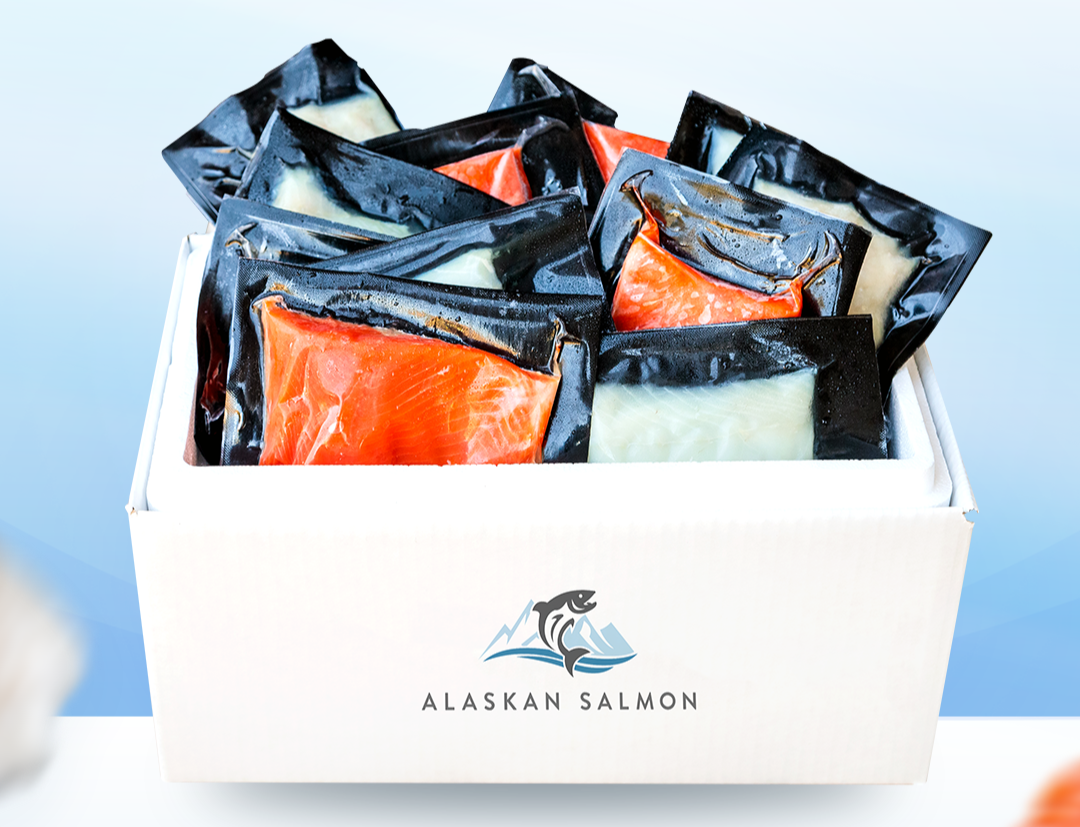How Long Does Salmon Last in the Fridge?
Updated on Nov 18, 2021
Salmon is a nutrient-rich fish enjoyed for its tender texture, rich flavor, and heart-healthy benefits. It remains a favorite protein choice in many households and can be served grilled, baked, raw in sushi, or smoked on a bagel. But like any seafood, how you store it can make all the difference in how long it stays safe — and tasty — to eat.
In this guide, we’ll learn how long does salmon last in the fridge, how to tell when it’s gone bad, and smart storage tips to keep it fresher for longer.
How Long Does Salmon Last in the Fridge?
How long salmon last in the fridge depends on a few factors — like whether it’s raw, cooked, vacuum-sealed, or smoked. Each type has a different shelf life, and knowing what’s safe (and when) can help you avoid waste and reduce your risk of foodborne illness.
How long does raw salmon last in the fridge?
Raw salmon typically lasts 1 to 2 days in the fridge. If you’ve purchased fresh salmon from the seafood counter or a trusted fishmonger, it's best to cook it within a day or two for optimal quality and safety.
Keep it stored in its original packaging or transfer it to an airtight container placed on a plate to catch any drips. If you’re not planning to use it soon, freezing it is a safer option.
Related: Can you Eat Raw Salmon?
How long is cooked salmon good for in the fridge?
Cooked salmon lasts 3 to 4 days in the fridge, because, after cooking, the heat kills most surface bacteria — but it doesn’t make the food immune to spoilage. Once the salmon cools, any bacteria present in the environment (or introduced during handling) can begin to multiply slowly, even in cold temperatures.
How long does thawed salmon last in the fridge?
Thawed salmon should be cooked and eaten within 1 to 2 days because once it's thawed, it's no longer protected by freezing temperatures that slow bacterial growth.
In the fridge, harmful bacteria like Listeria or Salmonella can begin to multiply if the salmon sits too long. Eating it within this short window helps reduce the risk of foodborne illness and ensures the best taste and texture.
Related: How to Thaw Salmon
How long does vacuum-sealed salmon last in the fridge?
Vacuum-sealed raw salmon can last up to 5 days in the fridge. Vacuum sealing removes most of the oxygen, slowing bacterial growth and spoilage. However, it should still be kept at a consistent temperature of 32°F to 38°F (0°C to 3°C).
Always check the "use by" or "sell by" date on the package, and when in doubt, use your senses — smell, color, and texture can all indicate spoilage.
How long does smoked salmon last in the fridge?
Smoked salmon can last 1 to 2 weeks if unopened, and up to 5 days once opened. The curing and smoking process extends the shelf life of salmon, which makes it a popular choice for longer storage.
Always keep it in the coldest part of the fridge and check the packaging for specific expiration dates. Once opened, store it in an airtight container and consume it within a few days for the best flavor and safety.
Related: Can You Freeze Smoked Salmon?
How to Store Salmon Properly in the Fridge
To keep salmon fresh and safe, store it in the coldest part of your fridge at 40°F (4°C) or below. Whether it’s raw, cooked, or smoked, salmon should always be sealed and cold.
Some refrigerators come with built-in thermometers, but if yours doesn’t, it’s a good idea to keep an appliance thermometer inside to monitor the temperature — especially useful during power outages.
If raw salmon is still vacuum-sealed and unopened, you can store it as is. Otherwise, wrap it tightly in plastic wrap or aluminum foil, or place it in an airtight container. Another option is to keep it on a plate of crushed ice, loosely covered, and change the ice daily to maintain freshness.
Cooked salmon should be cooled within 2 hours and stored in a clean, airtight container. Label it with the date and use it within 3 to 4 days. Avoid loosely covered containers that let in moisture and air.
No matter the type, minimize handling and only open the container when needed. If you won’t use it soon, freezing is the best way to extend its shelf life without sacrificing quality.
How to Tell If Salmon is Bad
Knowing how to spot spoiled salmon can protect you from foodborne illnesses like Salmonella or Listeria. When salmon goes bad, it usually shows clear signs in its smell, appearance, and texture, so trust your senses before taking a bite.
Smell is one of the first and most reliable indicators. Fresh salmon has a mild, ocean-like scent. If it smells sour, overly fishy, or like ammonia, it’s best to throw it out.
Next, check the appearance. The flesh should be vibrant pink or orange (depending on the variety) and look moist — not dull, grayish, or dry. Watch for signs of mold, discoloration, or a milky residue, especially on cooked or smoked salmon.
Finally, consider the texture. Fresh salmon feels firm to the touch and bounces back when pressed. If it feels slimy, sticky, or mushy, it’s likely spoiled.
Eating bad salmon can lead to symptoms like nausea, vomiting, stomach cramps, or diarrhea. When in doubt, it’s safer to discard it than risk getting sick.
Can You Freeze Salmon to Make It Last Longer?
Yes, freezing salmon is one of the best ways to extend its shelf life while preserving its flavor and texture for later use.
- Raw salmon can be frozen for up to 3 months for the best quality.
- Cooked salmon can be frozen for 2 to 3 months.
- Vacuum-sealed salmon may last even longer — up to 6 months — if kept frozen consistently at 0°F (-18°C) or below.
To freeze salmon properly, wrap it tightly in plastic wrap or foil, then place it in a freezer-safe zip-top bag or airtight container. Label it with the date before freezing. If you’re freezing fresh fillets, consider portioning them out so you only defrost what you need later.
Summary
Salmon is a delicious and nutrient-packed addition to any meal, but proper storage is needed to keep it safe and flavorful. Knowing how long salmon lasts in the fridge, and how to spot signs of spoilage, can help you make the most of this heart-healthy fish.
Looking for high-quality salmon you can trust? Try our wild sockeye salmon, flash-frozen at peak freshness. It’s the perfect way to keep premium salmon on hand — ready whenever you are.








